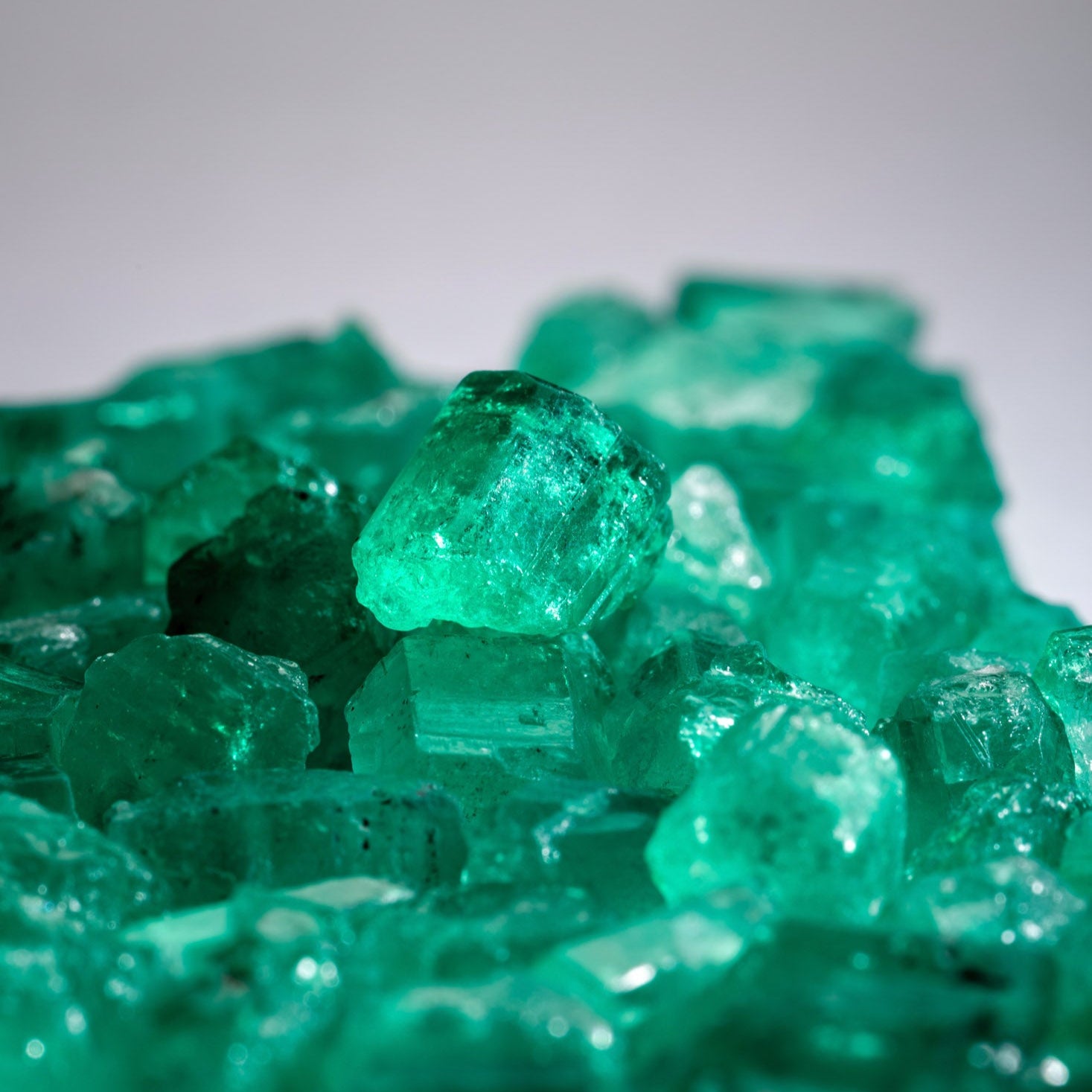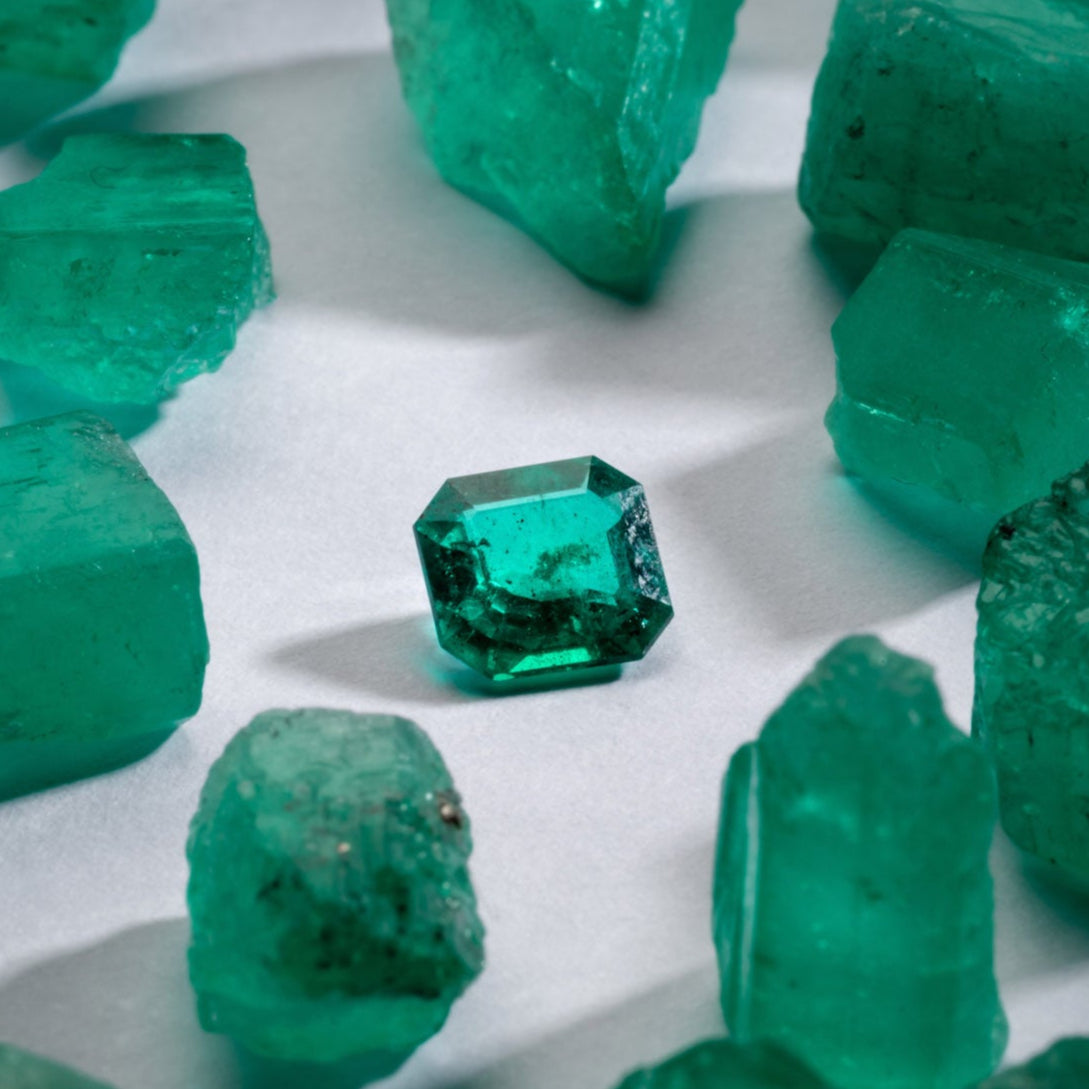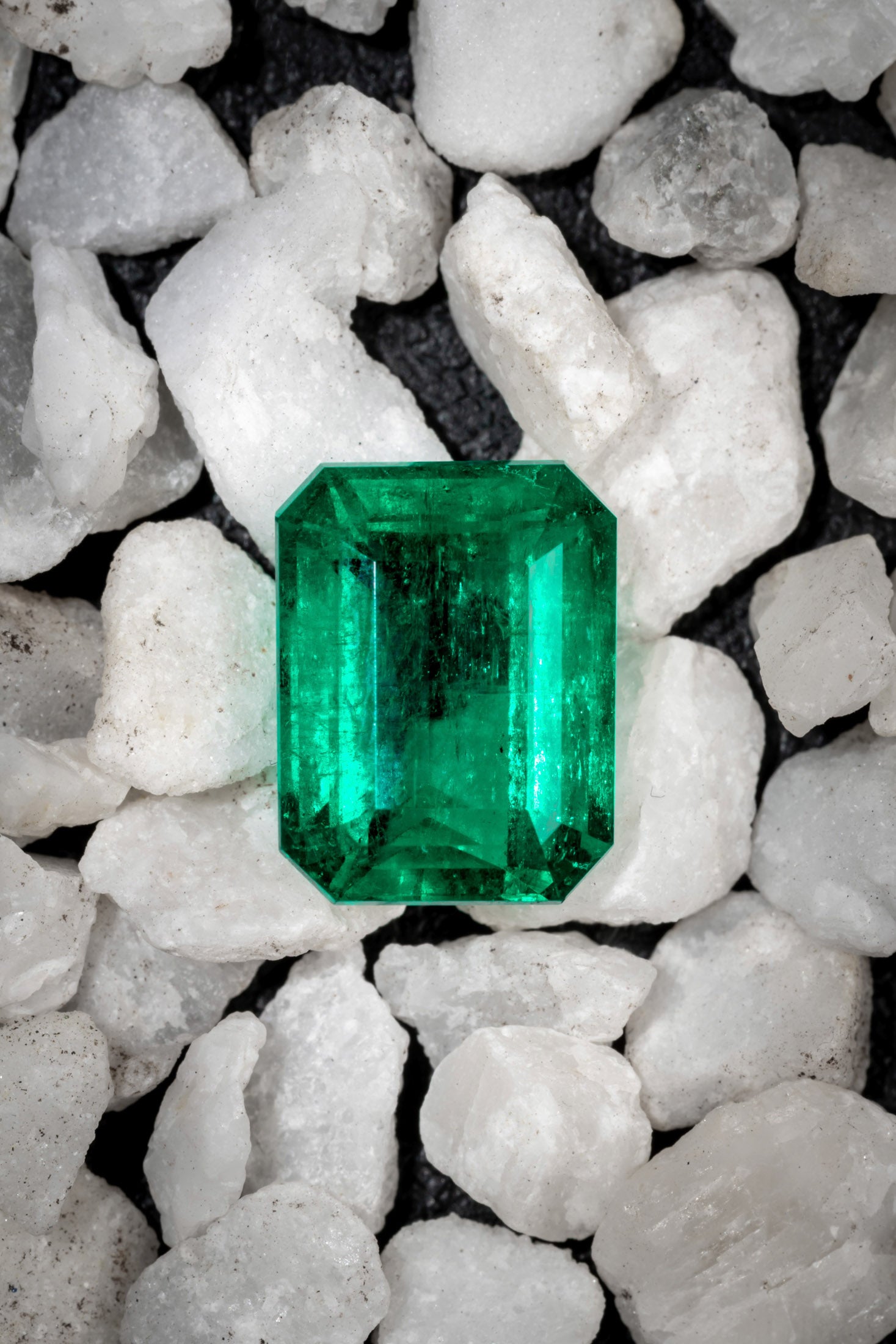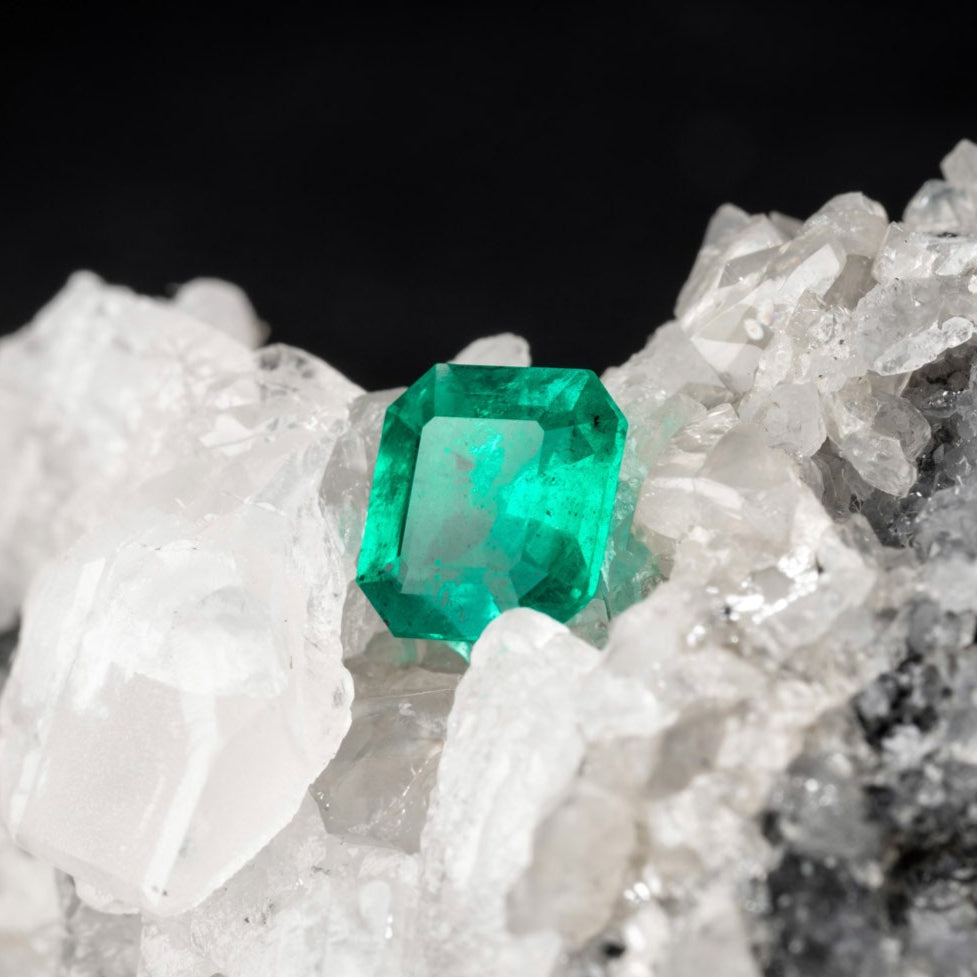Buyers Guide
Let us guide you in selecting the perfect emerald.
Identifying the unique characteristics that distinguish one emerald from another can be challenging for the untrained eye. At Oro Muisca, we simplify this process by carefully pre-selecting natural, high-quality Colombian emeralds that meet the highest standards of beauty, authenticity, and ethical sourcing.
How to Choose an Emerald
An emerald's quality is determined by color, clarity, cut, and carat, following the 4C principle used for diamonds. However, unlike diamonds, emeralds do not have a standardized grading system, making it essential to assess their value holistically.
Since each emerald is unique, even stones cut from the same rough may look different due to their natural inclusions their internal features that are a hallmark of authenticity.
Origin and Certification
Choosing a Colombian emerald already signifies exceptional quality, as Colombian emeralds are prized for their vivid color and superior clarity due to their rare geological formation. We strongly recommend selecting emeralds with a gemological report, which verifies their authenticity, origin, and key value factors.
The 4Cs of Emerald Quality

The most important Factor
COLOR
Color is the most defining characteristic of an emerald’s value. According to the Gemological Institute of America (GIA), the most desirable emeralds range from bluish-green to pure green, with vivid saturation and even color distribution. The finest emeralds have no visible color zoning or very dark and dull tones.

Inclusions that tell a story
CLARITY
While completely clear emeralds are exceptionally rare and highly valuable, high-quality emeralds typically feature inclusions that resemble small "gardens." Clarity is assessed based on the prominence of these inclusions and their impact on the stone’s transparency. Some inclusions are unique to Colombian emeralds, such as the Drop of Oil Effect, which creates a soft, velvety glow, and the Butterfly Wings Effect, a distinctive pattern that enhances both the desirability and value of the emerald.

Precision and Expertise
CUT
Cutting an emerald requires exceptional skill, as its natural inclusions make it more delicate than other gemstones. Nearly 70% of raw material is lost in the cutting process, making precision cutting essential to maximizing its beauty.
The most iconic shape is the emerald cut, designed to enhance color while minimizing risk of damage. However, other shapes, such as oval, round, heart and pear, are also commercially available.

More than just size
CARAT
Emeralds, unlike diamonds, have a lower density, meaning a 1-carat emerald looks larger than a 1-carat diamond.
The most significant price increases occur at 1.0ct, 3.0ct, 5.0ct, 7.0ct, 10.0ct, and 15.0ct. Most commercial stones fall between 0.50ct and 2.0ct.
Frequently Asked Questions
Is an emerald as strong as a diamond?
On the Mohs hardness scale, emeralds rank 7.5 to 8, while diamonds are 10. This means emeralds are durable but require care, as their natural inclusions make them more brittle. Avoid direct impact on the stone to prevent damage.
Can I assess an emerald’s value with the naked eye?
A preliminary assessment can be done using the naked eye or a 10x loupe, but a gemological examination is essential for a complete evaluation. Laboratories use tools like a polariscope, dichroscope, refractometer, and UV light, among other advance technology, to determine quality factors accurately.
Do lab-grown or synthetic emeralds exist?
Yes. Synthetic emeralds have been produced since 1938, and they can closely resemble natural emeralds, even including artificial inclusions. This makes gemological testing essential to confirm an emerald’s natural origin.
Contact us
If you have any comment or additional question, do not hesitate to contact us.
